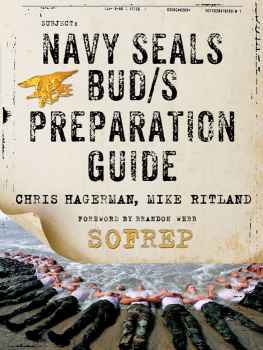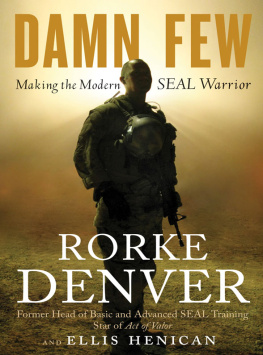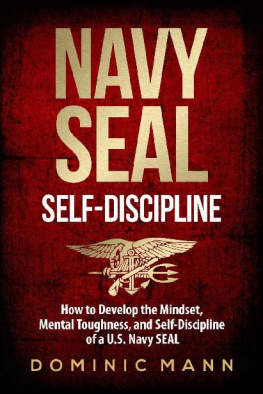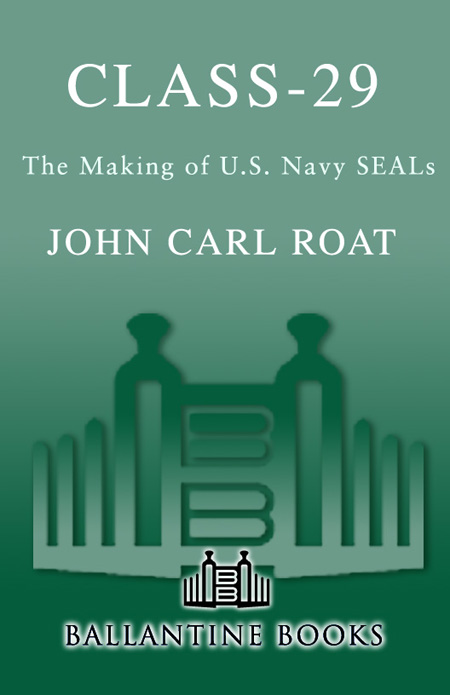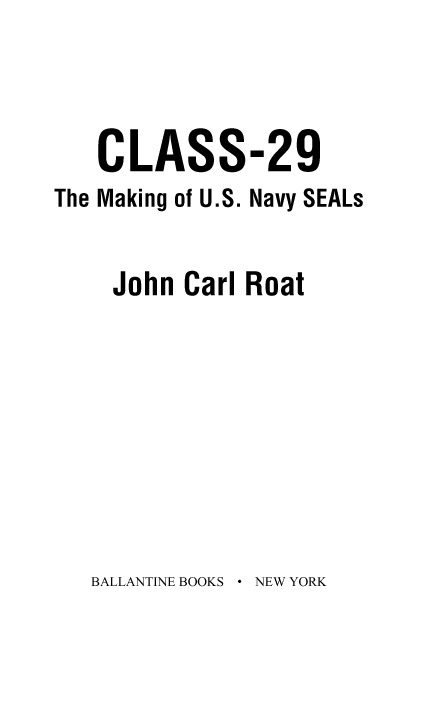To quote Rush Limbaugh, War is about killing people and breaking things. I have done it; war is not a lot of fun, and intellectually there is little to defend the practice. Notice I did not say nothing, I said little, and it is a damn big little.
It is this simple: If they are willing to kill people and break things, and you are not, they win. It is an ugly fact of human nature that if someone will not fight for what is his, he will lose it. This book is about men who choose to be ready to fight. Next to my wife and children, I am more proud of becoming a member of that group of men than of anything else I've done in my life.
This book is about the test to become a Frogman, the men I took it with, and the men who gave it to us. We were tested by the best, and I thank them. Our instructors had all taken the test; they knew the pain and the reasons for all the apparent craziness. In a way, the test was just about finding those who would not take the easy way out. When your back is to the wall, it is easy to fight. The real question is, what do you do when there is an easy way out?
People like those described here stand ready to do the bad business of war. To some they may seem sadistic, antiquated warmongers. But think about what you have to lose. Now ask yourself this simple question, When someone wants to break my things and kill me, who do I want watching my back?
INTRODUCTION
Little Creek Naval Amphibious Base was home to UDT-21, UDT-22, and the East Coast UDT Replacement Training Unit. I was nineteen and standing at the threshold of my life's ambition, being a United States Navy Frogman. I knew the only dangers to my not making it through training were injury or being thrown out. Quitting was not an option; I had never allowed myself to think that if things got too bad, I would quit. The only options I considered were I would complete training, my body would get broken, or the instructors would throw me out.
The only real worry I had was the being-thrown-out thing. I had no history of quitting or broken bones. I had been the kind of child who gave mothers gray hair well before their time. My mom and dad, two very strong, loving people, had found it very difficult to get me to stop doing what I wanted to do. What I did have was a short history of being thrown out of thingsthe church choir, Boy Scouts, and two California high schools.
True, my being thrown out of the church choir was due to the fact the choir director had a bad head cold the day I tried out for choir. His dropping me from the choir had saved the whole El Segundo Methodist congregation a lot of ear pain on Sunday mornings. Getting thrown out of the Boy Scouts and the two high schools I had accomplished by stubbornly following my own rules. I will note that I was not kicked out of El Segundo High until after water polo season; we were state champs. I was not thrown out of Westchester High until swimming season was complete; I swam breaststroke on the four hundred medley relay. Those negative thoughts had only lightly grazed my teenage brain.
Everything I have written is how I see it now, after years of hindsight. In those days, I didn't think many things out, I just did. When training started, I didn't think at all. I saw, I reacted, and I now believe those that made it through the six months did the same. The instructors wanted men out the backside of that training who did not quit, but that wasn't enough. We had to be willing to give any little energy we had managed to hoard to our classmates. Those two things came from the core; under stress we didn't have time to think them out. They were there, or they were not. Our instructors' whole purpose was to keep that stress applied, day after day, week after week, month after month.
My hope is to describe training accurately. The rest of my life, I have judged myself and others by the standard of those months and the strength of the men involved. Know that I cherish every second of training; it is with me for life. Each of the men who suffered the six months of UDT RT-29 is part of my heart, and I love them all.
I'm going to take the instructors' two-and-a-half-page synopsis of our class and use each phase section as a header for what I have to say about that phase of training.
Underwater Demolition Team, Replacement Training (class)-29.
PHASE ONE
Class XXIX convened 2 January and is to graduate 28 June. The class commenced with 134 students; of this total 16 were U.S. naval officers, 5 were foreign officers representing Greece, Belgium, Norway, Pakistan, and the Netherlands. There were 109 U.S. Navy enlisted and 4 Netherlands enlisted men. The first phase of training consisted of two weeks of physical preconditioning. Upon completion of the phase, 18 officers and 76 enlisted men remained to begin actual UDT training.
In truth, it was physical preconditioning; the instructors' objective was to put the body in the condition of pain. I had thought I knew a lot about UDT training. I knew most classes started with thirty or fewer. Why was our class so big? Our first formation was a joke; no one knew which end was up. We had been issued used green fatigues that didn't fit and surveyed boondockers, that is, worn-out work boots.
When we fell in, there was no military bearing, and Instructor Waddell just loved it. He welcomed us with, Hit the deck! Start pushing Virginia away! We had no idea what he was talking about. Waddell quickly taught us a position in which we would spend a good part of the next six months. You start by kicking both feet out behind you, your arms thrown straight out in front of your chest. If you land properly, you have hit the deck. You are now in a lovely position called the lean and rest. Your body is parallel to the ground, no sag, and you are held up by your extended arms and the tips of your toesthat's the hit-the-deck part. Instructor Waddell gave us our first educational opportunity: Hit the deck! and On your feet! over and over, until we could do it as a group. When he had us worked into a good sweat, he put us at the lean and rest, then walked through the ranks telling us what low-life scum we were. Waddell was particularly good at degrading officersbut with respect. Whatever he said to them, he always added a respectful, sir. When he determined that we had mastered the lean and rest, he gave us a class in push Virginia away, which meant lower yourself until your chest is no more than one fist-height from the ground, then raise yourself to the starting position, repeat until ordered to stop or you can't do it any more.


